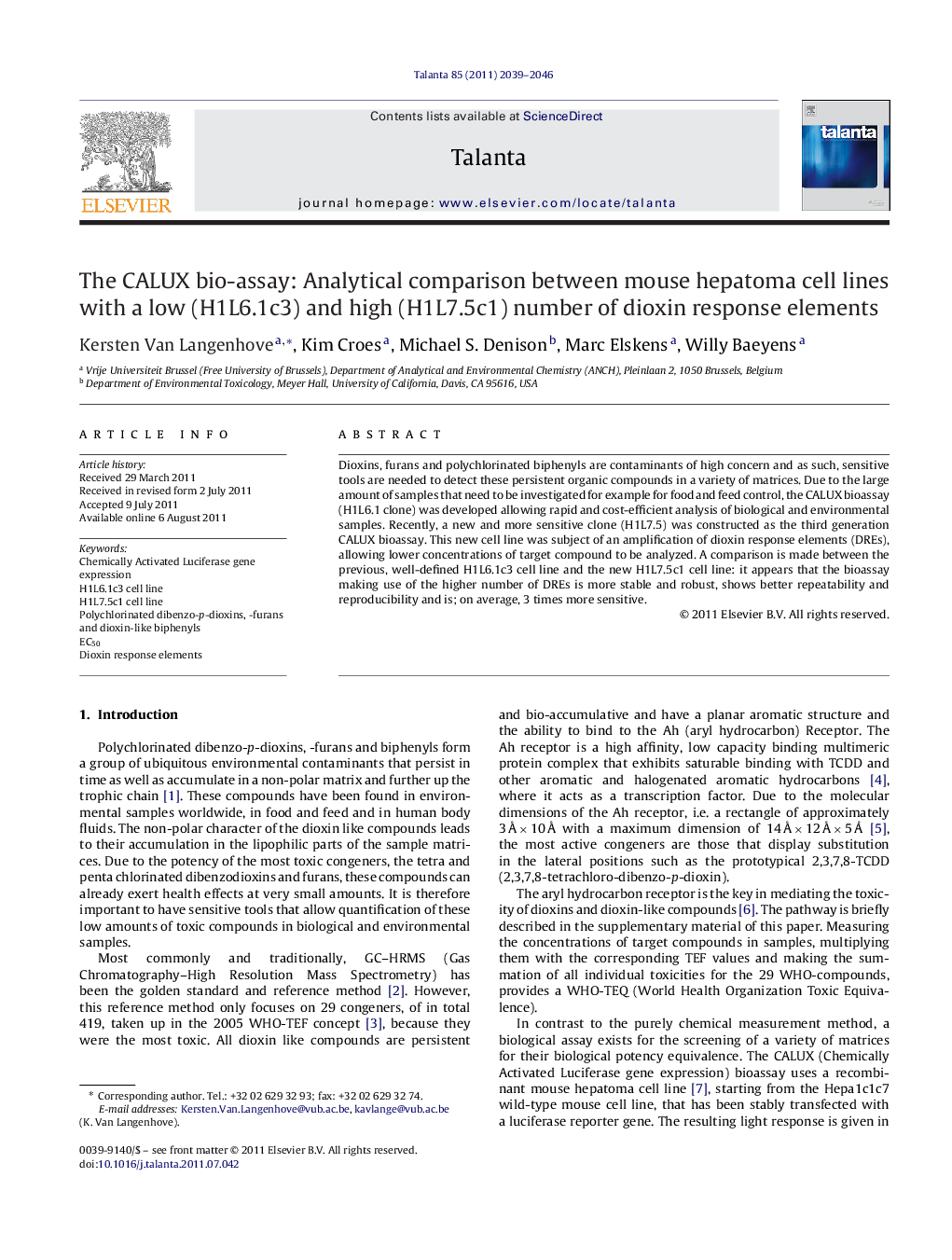| Article ID | Journal | Published Year | Pages | File Type |
|---|---|---|---|---|
| 10559494 | Talanta | 2011 | 8 Pages |
Abstract
Dioxins, furans and polychlorinated biphenyls are contaminants of high concern and as such, sensitive tools are needed to detect these persistent organic compounds in a variety of matrices. Due to the large amount of samples that need to be investigated for example for food and feed control, the CALUX bioassay (H1L6.1 clone) was developed allowing rapid and cost-efficient analysis of biological and environmental samples. Recently, a new and more sensitive clone (H1L7.5) was constructed as the third generation CALUX bioassay. This new cell line was subject of an amplification of dioxin response elements (DREs), allowing lower concentrations of target compound to be analyzed. A comparison is made between the previous, well-defined H1L6.1c3 cell line and the new H1L7.5c1 cell line: it appears that the bioassay making use of the higher number of DREs is more stable and robust, shows better repeatability and reproducibility and is; on average, 3 times more sensitive.
Keywords
Related Topics
Physical Sciences and Engineering
Chemistry
Analytical Chemistry
Authors
Kersten Van Langenhove, Kim Croes, Michael S. Denison, Marc Elskens, Willy Baeyens,
